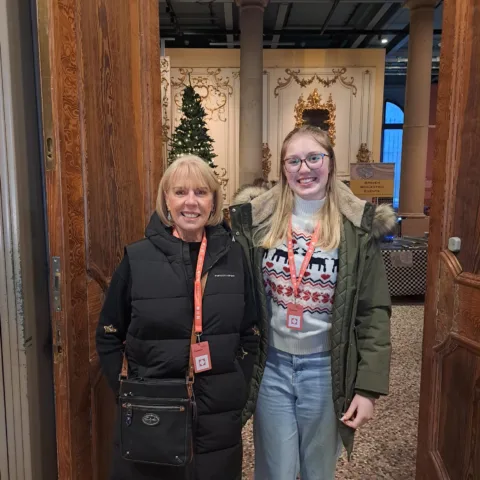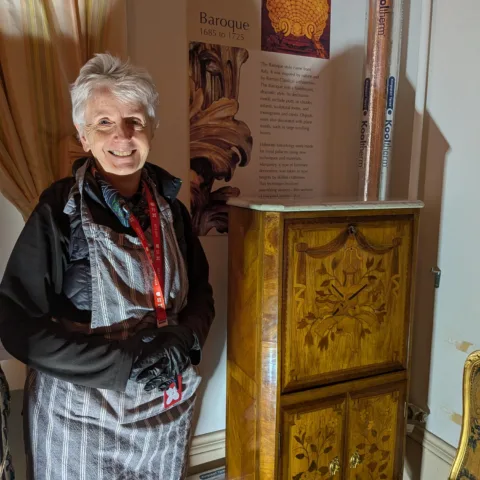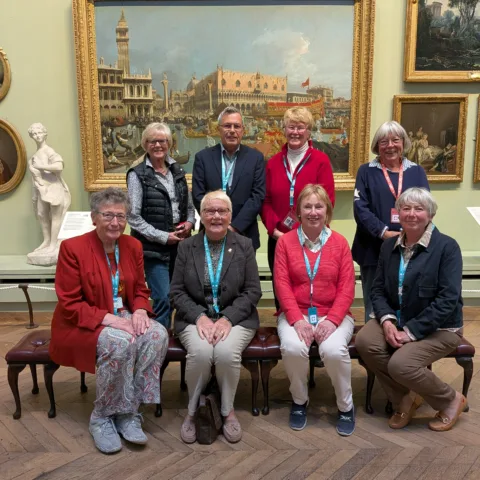The Bowes Museum Blog

Creating a Space to Explore Collections Care
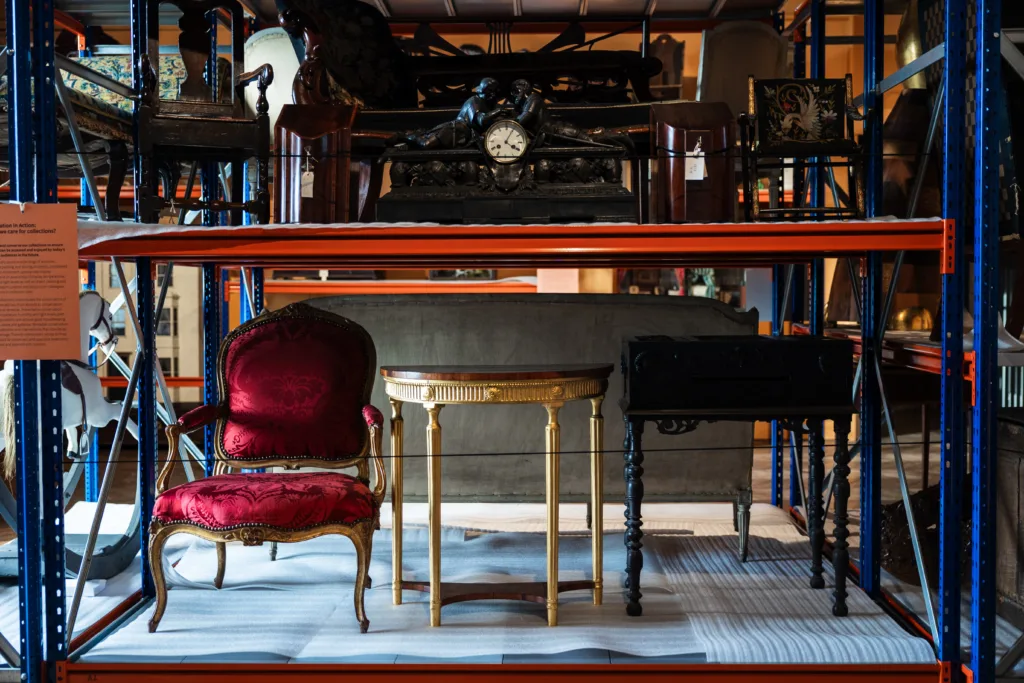
Over the last two years there has been a spurt of object movement at Museum, spurred on by the implementation of its new Mission and Values and focusing on making the collections more accessible. Some objects in storage are being relocated and some storerooms are being re-purposed. The result is that many objects which haven’t been on view for years, are being brought out into the limelight, as curators and educators seek new ways of telling stories and introducing them to audiences.
When the Silver Swan was moved into the central picture gallery after conservation in March 2024, the opportunity arose to redisplay the emptied space. With future possibilities of object movement due to new gallery developments, it was decided to create a flexible space where in collections could be housed temporarily, while other areas, galleries or stores, are being worked on. At the same time, we would bring some items out of stores into the public domain again. Dolls’ houses and toys were favourites in this latter category.
The apparent random placing of objects side by side on the racking, as well as the project’s title, Objects on the Move, is intended to demonstrate activities and decisions which are part of daily work in the Museum, but which have more often been undertaken behind the scenes. More than once in the past two years, when the current phase of object relocation and re-designation of spaces began, curators have scratched their heads as to where to place an item, often a very large and cumbersome one. At times, our work is likened to an enormous rubik’s cube!
By far the largest number of items on the move are pieces of furniture. These comprise Joséphine and John Bowes’ own furniture which graced their homes in France – a country château and a Parisian apartment – and John’s ancestral home at Streatlam Castle in County Durham; and English and European furniture acquired by the Museum throughout the twentieth century. Striking sculptural examples of woodwork and architectural fragments form a display on the North wall.
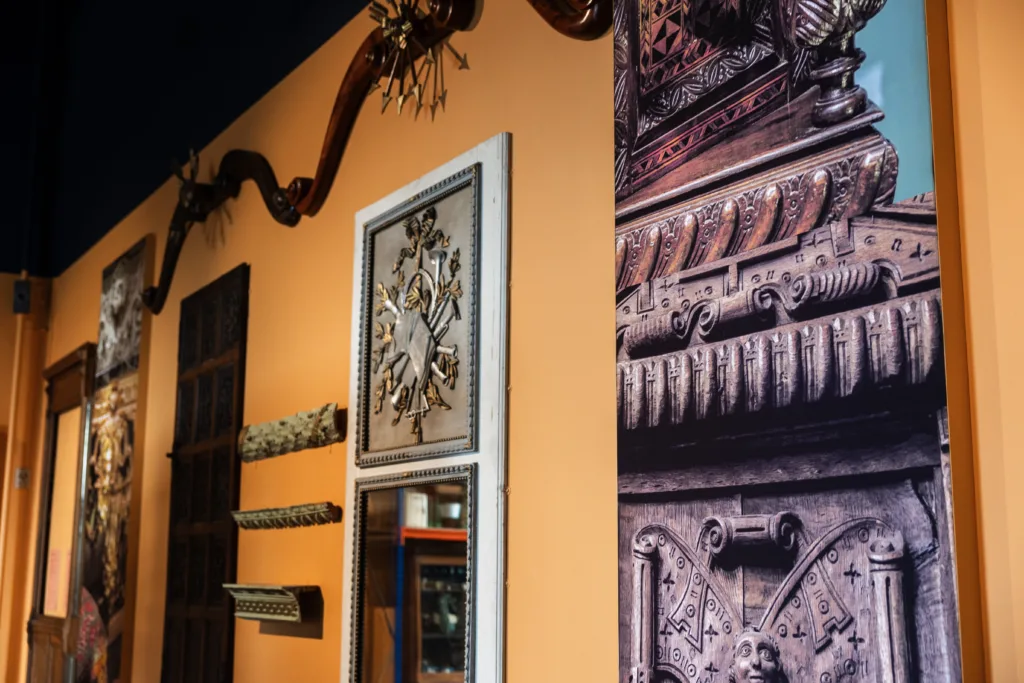
North Wall: Displaying examples of woodwork and architectural fragments.
Visitors thus get a glimpse into objects held in store and the challenges of object movement and storage in a busy museum. Moving certain items around the Museum is a logistical challenge and requires route-planning and object-handling skills.
If you’re a regular museum visitor, you may come across other museums and organisations which are adopting similar practices. In truth, these spaces act as a sort of pressure valve for curators, allowing time to make decisions and organise other areas of the museum while highlighting objects and aspects of our work which are not so well known.
They are amazing conversation-starters too. A corner of the gallery is a workspace for collections staff and volunteers to clean objects. We deliberately took the decision to showcase this activity to explain our environmental monitoring and housekeeping practices and to demonstrate materials and techniques used for cleaning objects. If you encounter a member of our team working in the gallery, do say hello. They’ll be pleased to tell you about their work and answer your questions.
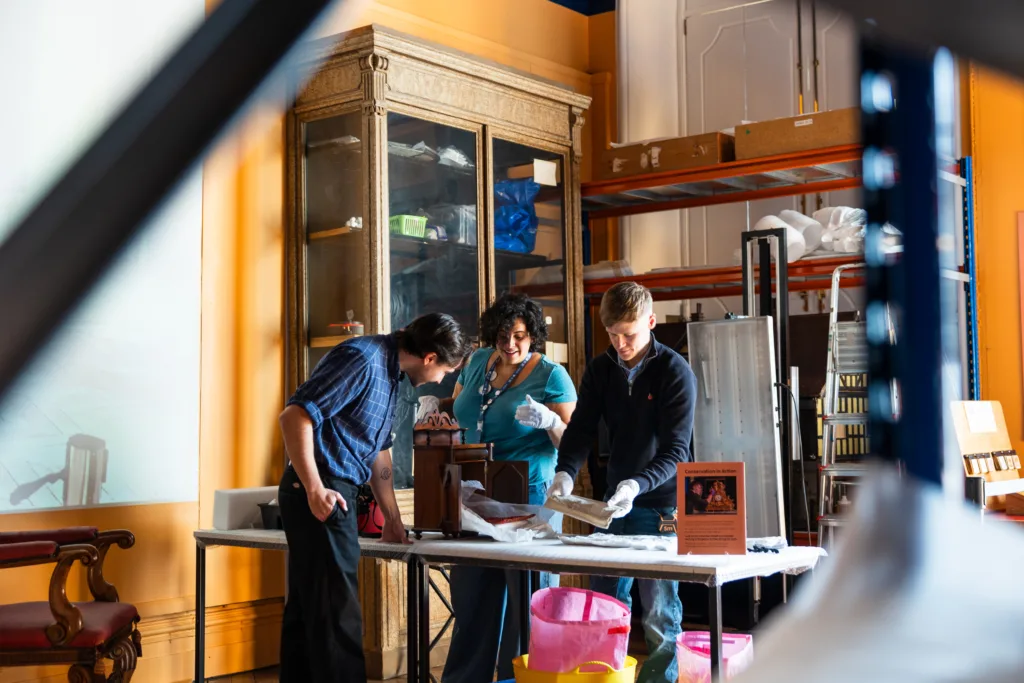
Joe Kinsey (Collections Coordinator), Alia Cruz (Learning Manager) delivering a live cleaning demonstration in the gallery, explaining the process to Connor Lagus (Learning Producer).
Many people with different skills and roles have been involved in developing this space: curators, who have selected objects and who talk about their work in the film in the gallery, our production team, who are specialists in hanging and installing objects, and the learning team, who are planning activities within this space. We’ve had fun making decisions together about identifying objects to include, re-acquainting ourselves with items in store and placing them in a new context.
Watch this space for activities, chat with our staff and volunteers and let us know what you think!
Written by Jane Whittaker, Collections Manager
October 2024
